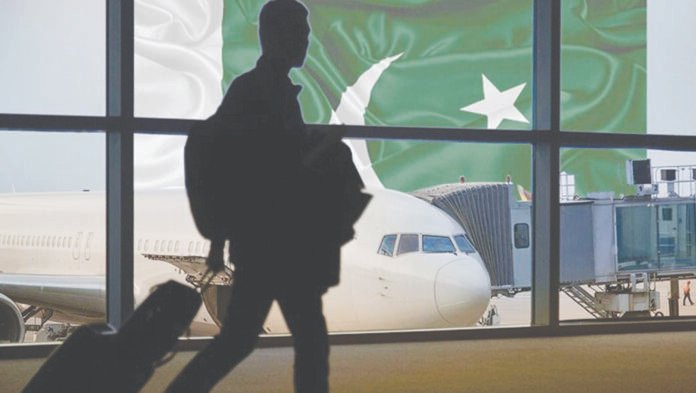Over the past 17 years, Pakistan has witnessed a staggering exodus of nearly 10 million of its citizens, driven by the pursuit of better opportunities abroad. A recent report by Pulse Consultant, titled ‘An Overview of Pakistani Emigration Patterns,’ reveals a comprehensive overview of the country’s migration trends, highlighting the significant socio-economic factors behind this mass movement.
The report details that a total of 9,556,507 Pakistanis have left the country since 2008, with the highest emigration rates recorded during the tenure of the Pakistan Muslim League-Nawaz (PML-N) from 2013 to 2018. The peak year was 2015, when over 900,000 individuals emigrated in search of jobs, marking the height of Pakistan’s migration wave.
However, by 2018, this number experienced a drastic decline of 60 percent, with only around 300,000 people leaving for overseas employment. The onset of the COVID-19 pandemic further influenced these trends, significantly disrupting global mobility. As the pandemic’s impact began to wane, migration numbers surged once again, reaching around 800,000 in both 2022 and 2023, as international travel restrictions eased.
Interestingly, the demographic profile of emigrants has also evolved over time. Since 2022, the proportion of highly skilled individuals leaving the country has increased to 5 percent, compared to just 2 percent in previous years. However, blue-collar workers and laborers continue to constitute the majority of emigrants, with 46 percent of those leaving in the last two years being unskilled laborers, up from 41 percent during the tenure of the Pakistan Tehreek-e-Insaf (PTI) government.
The destinations for Pakistani emigrants have also seen notable shifts. Traditionally, countries like Saudi Arabia, the UAE, Oman, and Qatar have been the top choices for Pakistani job seekers. However, the post-COVID era has introduced significant changes. The UAE, once a primary destination, has seen a sharp decline in the number of Pakistani workers, while Saudi Arabia has experienced substantial growth in its intake. Additionally, countries like the UK, Iraq, and Romania have emerged as attractive destinations for Pakistani workers, reflecting the changing dynamics of global labor markets.
This massive outflow of talent raises serious concerns about the potential brain drain and its long-term impact on Pakistan’s economy and workforce. The increasing migration of highly skilled professionals underscores the urgent need for the country to address the underlying factors driving this exodus, such as economic instability, limited job opportunities, and lack of adequate professional growth.
The implications of this trend are far-reaching. The loss of skilled professionals could hinder Pakistan’s economic progress and innovation, while the departure of unskilled laborers may lead to a shortage of workers in essential sectors. The government’s challenge lies in creating an environment that not only retains talent but also attracts skilled professionals back to the country.
As Pakistan continues to grapple with these challenges, it is imperative for policymakers to develop strategies that address the root causes of emigration and create opportunities that encourage citizens to contribute to the country’s growth from within its borders.
